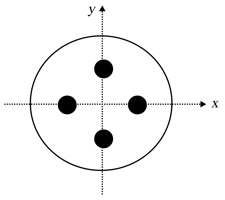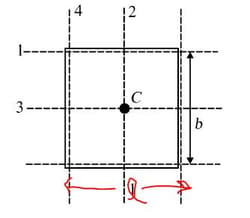Find the position of instantaneous centre of rotation and angular velocity of the disc in the following cases as shown. Radius of disc is in each case.
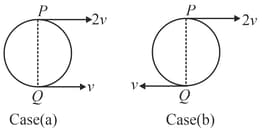


Important Questions on Rigid Body Dynamics: Part 1
A rotating disc moves in the positive direction of -axis as shown. Find the equation describing the position of the instantaneous axis of rotation if at the initial moment the centre of the disc was located at origin after which
(a) it moved with constant acceleration (initial velocity zero) while the disc rotating anticlockwise with constant angular velocity
(b) it moved with constant velocity while the disc started rotating anticlockwise with a constant angular acceleration (with initial angular velocity zero).
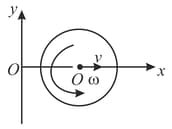
Find out the moment of inertia of the circular ares shown each having mass , radius and having uniform mass distribution about an axis passing through the centre and perpendicular to the plane.

Calculate the moments of inertia of the figures shown, each having uniform mass distribution about an axis perpendicular to the plane and passing through the centre.

In figure, find moment of inertia of a plate having mass , length and width $b$ about axes and . Assume that is the centre and mass is uniformly distributed.
Find the moment of inertia of a uniform square plate of mass and edge of length ‘ ’ about its axis passing through and perpendicular to it.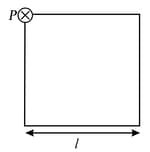
Calculate the moment of inertia of a rectangular frame formed by uniform rods having mass $m$ each as shown in figure about an axis passing through its centre and perpendicular to the plane of frame. Also find moment of inertia about an axis passing through ?
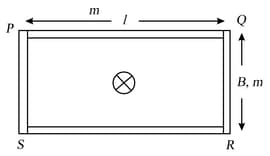
Find the moment of inertia of the two uniform joint rods about point as shown in figure. Use parallel axis theorem. Mass of each rod is ..
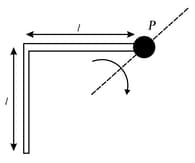
A uniform disc of mass and radius has an additional rim of mass $m$ as well as four symmetrically placed masses, each of mass , tied at positions from the centre as shown in figure. What is the total moment of inertia of the disc about an axis perpendicular to the disc through its centre?
